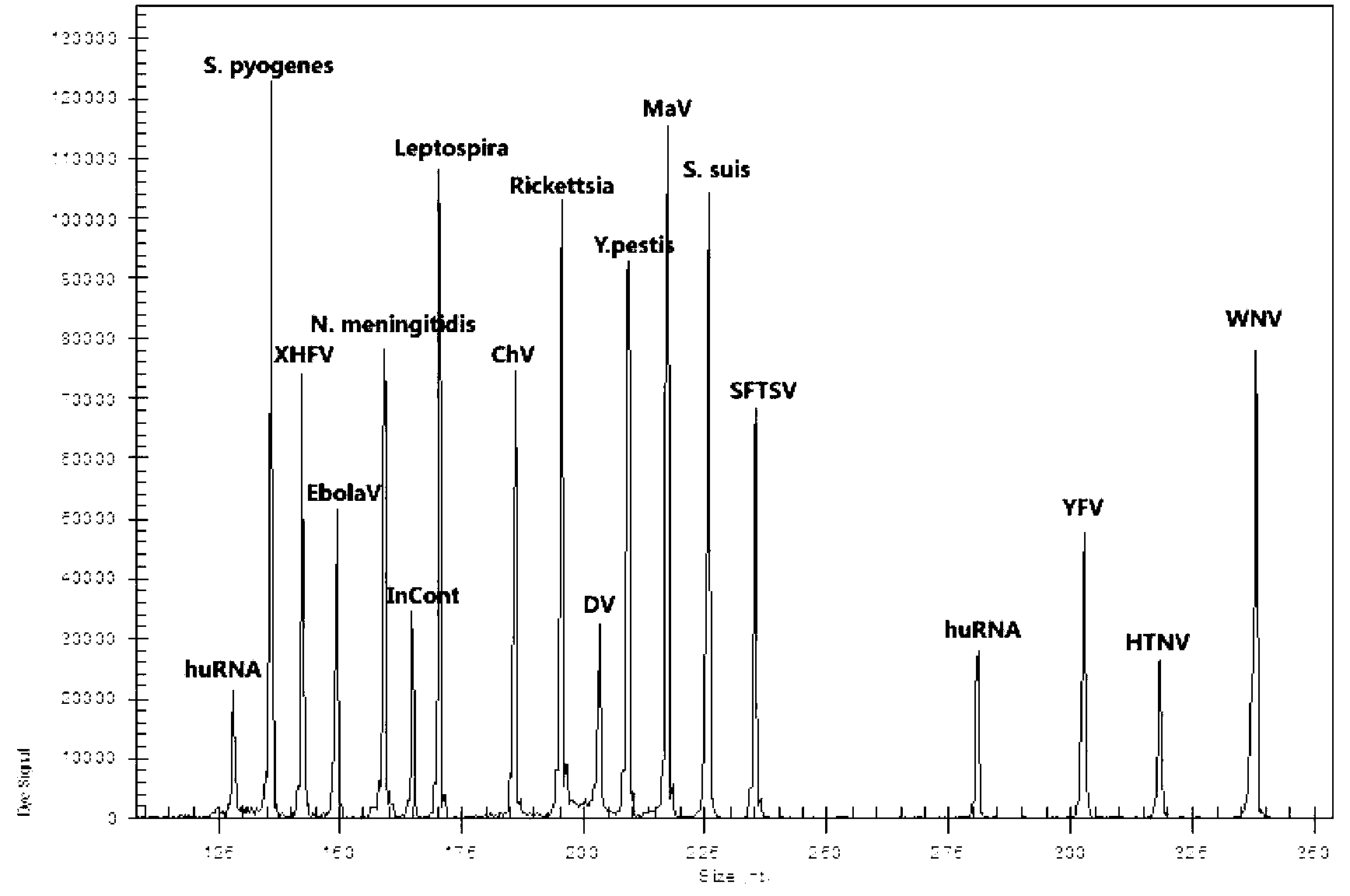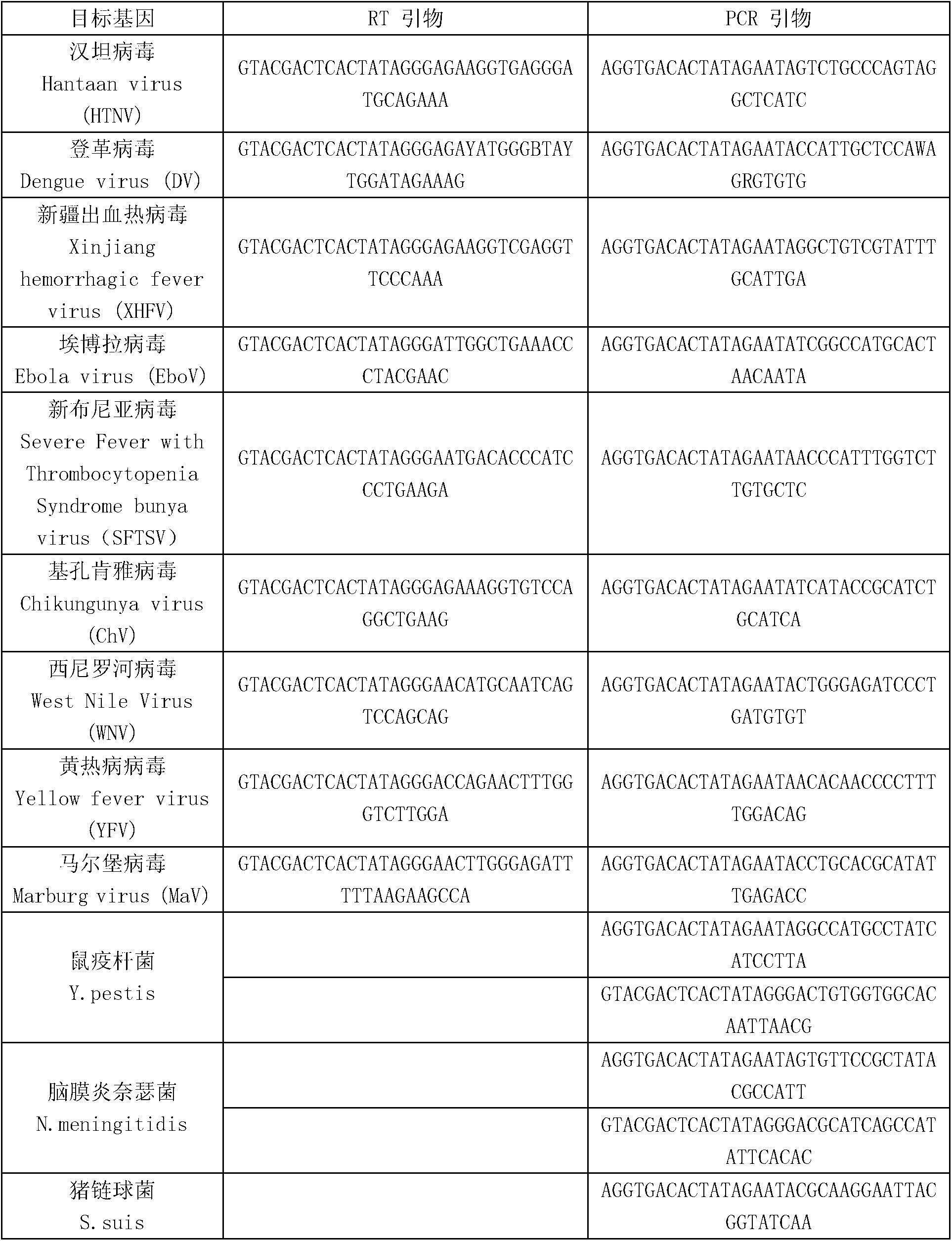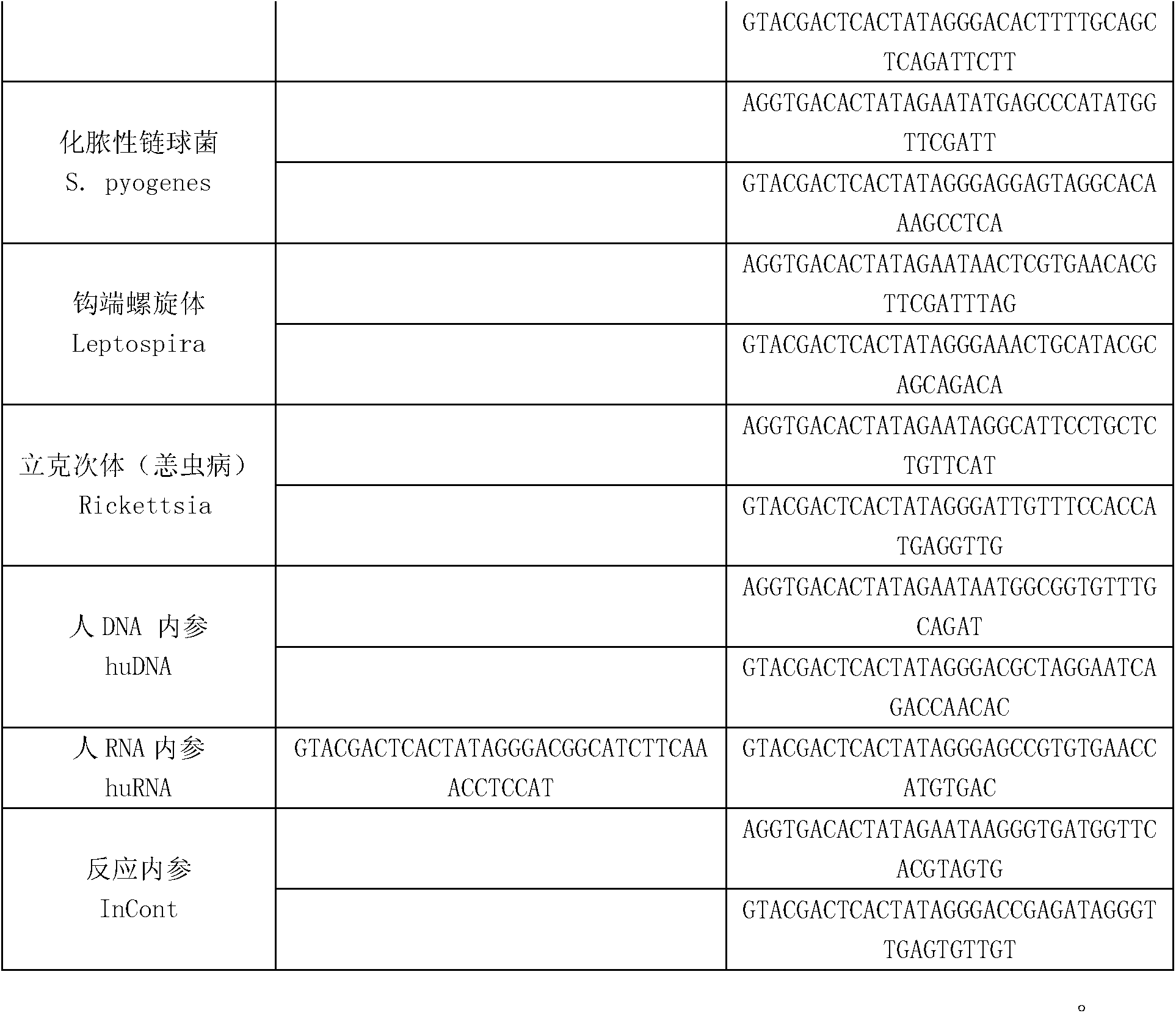Kit for synchronously detecting fifteen hemorrhagic fever pathogens and detection method of kit
A simultaneous detection and pathogen technology, applied in the direction of microbe-based methods, biochemical equipment and methods, microbiological measurement/testing, etc., can solve problems such as inability to diagnose, high technical cost, and high cost, and achieve good sensitivity and specificity , avoid the effect of low specificity and save production cost
- Summary
- Abstract
- Description
- Claims
- Application Information
AI Technical Summary
Problems solved by technology
Method used
Image
Examples
specific Embodiment 1
[0037] The present invention is a kit for simultaneous detection of fifteen kinds of hemorrhagic fever pathogens, including DEPC water (RNase / DNase-free ultrapure water), 5×RT buffer, reverse transcription primer (RT primer mix), RT enzyme ( Full name Reverse transcriptase), X solution, 10×PCR buffer, PCR primer (PCR Primer Mix), 25mM magnesium chloride solution, DNA polymerase (Taq DNA Polymerase), positive control (obtained from each target pathogen clone, including Target fragment plasmid, used for quality control of the entire reaction system), 5×RT buffer, 10×PCR buffer, 25mM magnesium chloride solution, and DNA polymerase were ordered from sigma company.
[0038] The above-mentioned reverse transcription primers include the RT amplification primers of nine kinds of hemorrhagic fever pathogens in the following table 1 and the RT amplification primers of human RNA internal reference, and the above-mentioned PCR primers include the forward and reverse PCR amplifications of t...
specific Embodiment 2
[0048] The invention is a method for synchronously detecting fifteen kinds of hemorrhagic fever pathogens, and the detected hemorrhagic fever pathogens are Hantaan virus, dengue virus, Xinjiang hemorrhagic fever virus, Ebola virus, New Bunia disease, Chikungunya virus , West Nile virus, yellow fever virus, Marburg virus, Yersinia pestis, Neisseria meningitidis, Streptococcus suis, Streptococcus pyogenes, Leptospira, Rickettsia (tsutsugamushi), etc. (see Table 1) , collect patient samples (blood, throat swabs, etc.) to extract nucleic acid, use patient nucleic acid as a template to perform reverse transcription and PCR reactions, and finally separate samples by capillary electrophoresis. The specific steps are as follows:
[0049] 1. Production of kits for the simultaneous detection of fifteen hemorrhagic fever pathogens based on the GeXP multiple gene expression genetic analysis system. The components included in the kit are the same as those in Example 1 above;
[0050] 2. Co...
specific Embodiment 3
[0076] Detection Kit Sensitivity and Specificity Analysis
[0077] Sensitivity analysis: After diluting the positive control according to a certain copy number ratio, PCR amplification and capillary electrophoresis detection until no signal is detected, the copy number is the lowest detection line, which is the sensitivity of the kit. The highest sensitivity can detect 40 copies.
[0078] Specificity analysis: Single-plex PCR amplification is detected as a single peak of the target fragment size by capillary electrophoresis.
PUM
 Login to View More
Login to View More Abstract
Description
Claims
Application Information
 Login to View More
Login to View More - R&D
- Intellectual Property
- Life Sciences
- Materials
- Tech Scout
- Unparalleled Data Quality
- Higher Quality Content
- 60% Fewer Hallucinations
Browse by: Latest US Patents, China's latest patents, Technical Efficacy Thesaurus, Application Domain, Technology Topic, Popular Technical Reports.
© 2025 PatSnap. All rights reserved.Legal|Privacy policy|Modern Slavery Act Transparency Statement|Sitemap|About US| Contact US: help@patsnap.com



